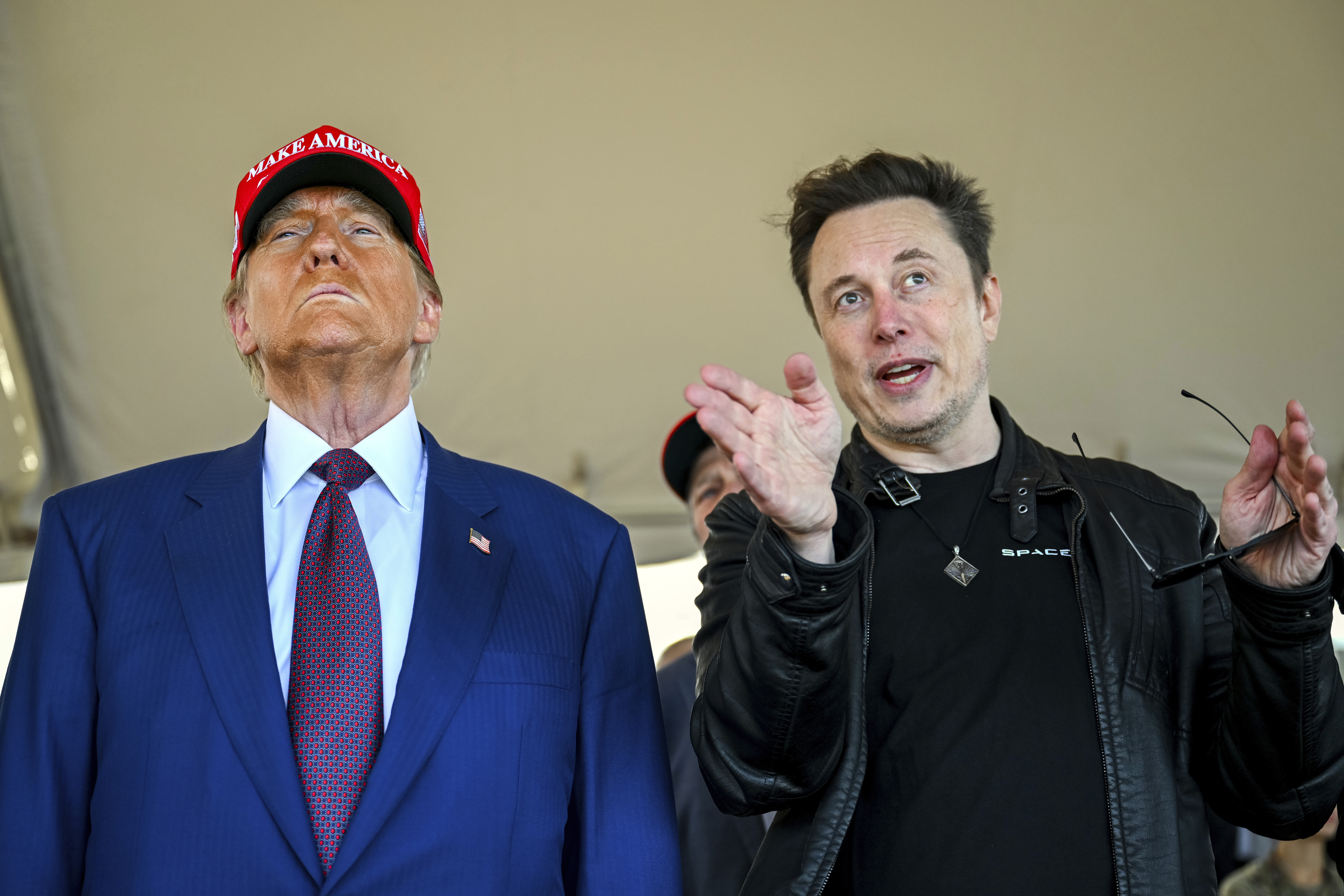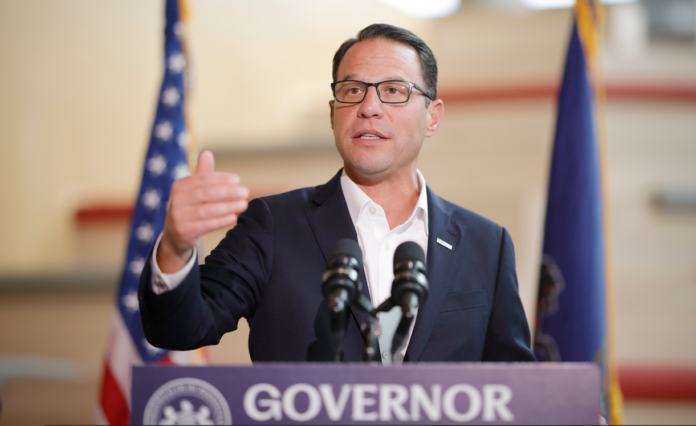Donald Trump has a familiar target in his sights: Pennsylvania’s voting rules.
He never stopped attacking court decisions on mail-in ballots during the COVID-19 pandemic, falsely claiming it as a reason for his 2020 loss in the crucial battleground state. Now, the former Republican president is seizing on a decision by Democratic Gov. Josh Shapiro to bypass the Legislature and start automatic voter registration.
The blowback has echoes of the 2020 election when Trump and his allies relentlessly criticized decisions by the state’s Democratic-majority Supreme Court. That included extending the deadline to receive mail-in ballots over warnings that the pandemic had slowed postal service deliveries.
Republicans have joined Trump in railing against Shapiro’s action, saying there are not enough safeguards to prevent minors or undocumented immigrants from registering. The Shapiro administration disputes that.
“THE DEMOCRATS ARE TRYING TO STEAL PENNSYLVANIA AGAIN BY DOING THE ‘AUTOMATIC VOTER REGISTRATION’ SCAM,” Trump wrote on his social media platform.
Some Republican lawmakers are threatening litigation, saying Shapiro should have sought approval from the Legislature, where control is divided between the parties. Meanwhile, national and state Republican parties are seeking an explanation from Shapiro’s administration for how it will ensure that non-U.S. citizens and minors cannot register to vote.
In a statement, Republican National Committee Chairwoman Ronna McDaniel said Shapiro is springing an “unclear and unnecessary last-minute rule change” on voters weeks before the Nov. 7 election, which features a race for a state Supreme Court seat. The first-term governor “cares more about getting airtime on MSNBC than making sure Pennsylvania elections are secure and transparent,” McDaniel said.
Shapiro also is trying to capitalize on his move. He did a round of national cable TV appearances after the Sept. 19 announcement and used it as fundraising pitch, promoting it as a major advancement for democracy.
“This will help tens of thousands of Pennsylvanians make their voice heard — no matter who you choose to vote for or what your views are,” Shapiro said in a fundraising email.
Democrats contended that Shapiro was well within his legal authority to authorize automatic voter registration. One election lawyer, Adam Bonin, said Republicans criticizing it are simply seeking cover, should Trump lose in 2024, and are using it to raise campaign donations.
States began enacting automatic voter registration systems in 2015, and versions of it have now spread to 24 states and the District of Columbia, according to the National Conference of State Legislatures. Most of those states are left-leaning, but they also include Republican-controlled Alaska, Georgia and West Virginia.
Georgia implemented it in 2016 and has seen an increase in registrations and no problems with non-U.S. citizens registering to vote, according to the state elections office. A survey of several states with automatic voter registration revealed similar experiences.
In Pennsylvania, people will notice the change when they head to a driver’s license center to obtain or renew a license. On computers there, a prompt will tell them they will be registered to vote “unless you decline to register.”
Previously, the prompts asked users if they wanted to register and to affirmatively check a box saying “yes.”
The Shapiro administration said it already has protections in place to prevent non-U.S. citizens or those under age 18 from being offered registration.
Some of those protections date to 2017, when the state said it fixed a two-decade-old glitch that might have enabled several thousand non-U.S. citizens to inadvertently register to vote. Officials estimate that people in that group cast about 540 ballots over 35 elections in 17 years.
Republicans in some states that have switched to automatic registration say it will lead to fraud or illegal voting, and conservatives in Alaska have attempted to repeal that state’s automatic registration.
Election researchers say no widespread fraud or illegal voting has emerged from the process. The most common problems are initial glitches in matching outdated information or giving unclear instructions to people who were registering or updating their voter information.
Supporters say it is a more secure, efficient and cost-effective way to maintain voter rolls.
“It’s more important to look at what are the advantages here, and there are a lot of advantages of this particular reform and there is a reason why many states have moved in this direction,” said Tammy Patrick, CEO of programs for the National Association of Election Officials.
Where research has been done, it didn’t show any particular advantage for any group other than a slight boost to Republican registration and that of rural white voters, said Charles Stewart III, director of the Massachusetts Institute of Technology’s Election Data and Science Lab.
“That’s something that both Democrats and Republicans need to keep in mind — that this is not going to be the game-changer that anybody believes and hopes for, or fears,” Stewart said.
In Pennsylvania, roughly 8.6 million people are registered to vote, while slightly more than 1 million are at least 18 years old but unregistered, according to government figures.
Left-leaning groups applauded the adoption of automatic registration. The New Pennsylvania Project said it “will undoubtedly help to close the voter registration gap, especially in communities of color, where the gap is the most pronounced.”
Researchers from the Public Policy Institute of California, the University of Southern California and the University of California, Berkeley, concluded in a 2021 study that automatic voter registration had increased registration by 3% in states where it was in effect.
But the increase in the number of people actually voting was only about 1%, meaning that most people who registered that way did not end up casting a ballot.
Still, even that small percentage could mean tens of thousands of new voters going to the polls in Pennsylvania, potentially a meaningful figure in a tight election. In 2020, Democrat Joe Biden won by about 80,500 votes, while Trump won in 2016 by about 44,200 votes.
Shapiro’s order could be headed for a court challenge, which would be a familiar landing spot for disputes over election laws in the state.
In the months before the 2020 election, Trump’s campaign, state officials, the Democratic Party and others fought over the rules for mail-in voting, as Trump worried those ballots would cost him the election and baselessly smeared them as rife with fraud.
Sam DeMarco, the GOP chairman of Allegheny County, which includes Pittsburgh, said he is not ready to say that 2024 will be a replay of 2020. But the way Shapiro enacted automatic registration — without hearings, legislation or a public education process — didn’t help promote the kind of transparency that could dispel conspiracy theories, he said.
“I don’t know where we’re going. It’s going to depend on the actions of some as to how bad it gets,” DeMarco said. “But I think both sides have to be ready because, as history has shown, they can’t help themselves.”
__
























